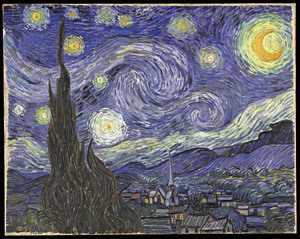“I cannot even say for certain what the day and year of my dad’s death was, even though I was with him during his final moments. When dad started dying from his cancer was when I started to become very ill.
“I did not feel ill, in fact, considering what was happening, I felt very good.”
Lisa is a 39-year-old professional woman. She works in the field of healthcare, as a medical assistant, and has made a career of helping others. For much of her adult life, Lisa has been living with the diagnosis of a disorder of the brain known commonly as bipolar disorder.
In the hope that better information will lead to better understanding of bipolar disorder, and perhaps in some way help others living with the diagnosis, Lisa has chosen to share some of her thoughts about her history thus far with the disorder. She is very candid about her experiences as one patient living one life as a person with bipolar disorder, and she pulls no punches when describing the condition, its effects on her, her family, friends, and co-workers, and how many mysteries remain for her about living with bipolar disorder.
Lisa is divorced, and is not on good terms with her ex-husband. Her children live with their father. They have a better life and are given more opportunities living with their dad and step mom than they do with me,” she says. At this time, Lisa is in the depressed state of the disorder. She currently has very limited contact with her family, and most of her social life is spent with what she refers to as a “new group of friends.”
Often also referred to as manic depression, bipolar affective disorder, and manic-depressive illness, bipolar disorder is classified as an “affective disorder” that is characterized by dramatic mood swings in the affected person. He or she will experience incredible highs, known as “mania,” and extreme lows, which represent the depressive state. Bipolar disorder is a disorder of the brain.
The technical definition of bipolar disorder is the indication of one or more manic episodes (or “up” episodes), accompanied by one or more major depressive episodes. Generally, these episodes occur is cycles. (Psycom.net)
Because of the unpredictable and often severe nature of the mood swings experienced by a person with bipolar disorder, it is not uncommon for someone living with the disorder to experience disruptions and problems in their daily lives. Job and school performance, personal relationships, diet, and sleeping patterns may all suffer.
Before she was diagnosed with bipolar disorder, Lisa already had a long history with troubled interpersonal relationships, sleep disruption, and issues at work. Her skills in her profession were often overshadowed by her behavior, and problems with co-workers. On one occasion, she was called into her supervisor’s office after a co-worker reported being worried about her. Lisa remembers being sent into “a fury of rage,” and becoming suspicious of the co-worker’s motives. “This festered inside me until I finally convinced myself that she did not like me and was out to get me.” Lisa says. “I always had issues with co-workers or bosses, so this was normal to me. I had always been paranoid in the work environment.”
Lisa lost several friendships over time, and reports continuing problems in the workplace caused by her erratic behavior. Her social circle changed. “I somehow managed to get involved with people whose lifestyles and habits were not healthy for me,” she says. During that time, Lisa also remembers starting a relationship with a man who was already in a relationship, and causing “a problem at work that required an in-service by an outside company to address.”
None-the-less, it was years before doctors were able to recognize that Lisa was living with bipolar disorder. Although she had been treated with anti-depression medications in the past, they had not been prescribed to address bipolar disorder, and may, in fact, have caused more harm than good in her case. Looking back I can see symptoms of my illness dating back to my teenage years,” Lisa says. “After my divorce in my late 20’s, I was prescribed my first anti-depressant for an ‘adjustment disorder.'” Lisa took the medication, as prescribed, for a time. She stopped, however, because she found it not only to be ineffective, but to be causing additional problems, as well. “Taking an anti-depressant alone without any other mood stabilizers can cause increased symptoms of the illness,” she explains. “That is what happened to me. I became hypo-manic and experienced extreme anxiety. ”
That anxiety became so severe that it began to manifest corporeally. Lisa experienced neurological phenomena known as pseudoseizures. Pseudoseizures are a form of conversion disorder in which the body responds to a psychological disturbance through seizure activity. (eMedicine)
“The pseudoseizures are real seizures,” says Lisa, “but unlike epilepsy, they are not provoked by abnormal electrical discharges of neurons in the brain. A neurologist told me they were from ‘deep in the limbic system.’ Basically what this means is that they are emotional in nature.”
Like her diagnosis of “adjustment disorder,” Lisa’s experience with pseudoseizures further complicated her psychiatric picture. Pseudoseizures are generally rooted in childhood trauma, and are not symptomatic of bipolar disorder. “It is quite common for people with bipolar disorder to suffer from other psychiatric illnesses,” Lisa explains. “I also suffer with ADD, along with anxiety and bipolar.” It is important that the association that bipolar disorder often has with other psychiatric illnesses become better understood by people who may be suffering from the disorder, as those other diagnoses can sometimes serve to cloud or confuse the diagnostic process. According to the National Institute of Mental Health, “anxiety disorders, such as post-traumatic stress disorder and obsessive-compulsive disorder, also may be common in people with bipolar disorder.” Also frequently observed, the NIMH adds, are problems with alcohol and substance abuse, including the self-medication of symptoms through the use of illegal drugs or unprescribed medications. (National Institure of Mental Health)
Not long after the onset of Lisa’s pseudoseizures, she experienced a serious psychological incident at work. “It happened after three days of not sleeping but being very alert,” she recalls. “Things at work went from bad to worse. I went from hypo-manic, to manic, to having a psychotic episode.”
This occurrence led to the start of intensive psychotherapy for Lisa. She continued to experience heightened feelings of paranoia and persecution, and she fluctuated between feeling that she was doing well and rebuilding her reputation at work and increasingly frequent psychotic episodes. “I spent several years going on and off different medications for ‘mental health’ issues, without any confirmed diagnosis,” she says.
Eventually, after a year and a half of therapy and medication, Lisa was at last diagnosed with bipolar disorder. “When my father died was when I became the most ill and finally got the help I needed,” she says. “I am currently taking several medications to keep my illness ‘controlled.’ My medications often have to be adjusted due to flares of my illness. With extensive visits to a therapist I am now able to realize what triggers my illness and, with psychiatric care, I am also able, at times, to recognize when my illness starts to worsen.”
The unpredictable nature of bipolar can be chaotic, emotionally and psychologically. The cycling of mood swings can be rapid, or the episodes can be drawn out. A person may find themselves manic or depressed for days, weeks, months, or even years before the episode subsides. At that point, they may find themselves settled for a time in a normal state of mood, or they may slip to the other extreme.
There are two main types of bipolar disorder. The first is called bipolar I. Considered the “classic” form of bipolar disorder, bipolar I is generally characterized by long episodes of mania which are then followed by long episodes of depression. Bipolar I is the form of bipolar disorder that most people think of when they hear the phrase.
The second form of bipolar disorder, bipolar II, is a little more ambiguous and is often more difficult to recognize. Bipolar II involves an occurrence of at least one major depressive episode, but also includes at least one episode of what is called “hypomania.” Hypomania is a less extreme form of mania.
How do you recognize the disorder in others? Is an observation of a tendency toward mood swings or seemingly irrational behavior or thought processes in a person a reliable indicator that he or she may be bipolar? And if so, why did it take so long for Lisa to be diagnosed?
There are some common symptoms associated with bipolar disorder. During the manic phase, some of these symptoms of bipolar disorder include an unnaturally, or unwarranted, “high,” even euphoric, mood, a sharp increase in energy, irritability and restlessness, provocative behavior, distractibility or lack of concentration, racing thoughts, excessive or fast speech, poor judgment, aggression, drug and alcohol abuse, increased sex drive, excessive spending, and lack of sleep or of the perceived need for sleep. However, also often present in a person experiencing the manic phase of bipolar disorder is a belief in his or her infallibility and in an unrealistic ability to handle any situation. There is also a common tendency during the manic phase for a person with bipolar disorder to refuse to admit or even to believe that anything is wrong.
During the depressive phase of bipolar disorder, common symptoms include depression, anxiety, lack of self worth, helplessness, hopelessness, pessimism, fatigue, trouble sleeping or over sleeping, weight and appetite changes, decreased sex drive, memory and concentration problems, irritability, physical aching and pain, and lack of interest in preferred activities. Thoughts of death and suicide are of particular concern for people experiencing the depressive phase of bipolar disorder, and for the people in their lives.
Many of these symptoms are indicative of other problems, or may be perceived simply as character traits of the person afflicted with bipolar disorder. In the case of bipolar I, episodes can last for many months or years before the person experiences either a period of normalcy or slips into the other phase of the disorder. Someone with bipolar I may also be depressed for a long time, and be diagnosed with a depressive condition other than bipolar disorder.
The symptoms of bipolar disorder are often frightening and confusing to the person living with the disorder as well, which can also complicate a doctor’s ability to diagnosis it properly. “I was convinced I had Schizophrenia even though my therapist assured me otherwise, as did my doctor,” Lisa remembers.
Trouble maintaining relationships with family and friends, and a tendency to change social circles with the changing of bipolar episodes, is still another commonality of many people with the condition, and this dynamic can also serve to impede diagnosis. With different eyewitnesses experiencing the myriad forms of the disease, there is an inherent blockade against the detection of personality or behavioral changes. It is not uncommon for people with the disorder to describe strained relations with their families, or no relationship with them at all. As the people who, for better or for worse, can usually recognize behavioral changes most clearly and immediately, the strained family dynamics of many people living with bipolar disorder can provide a devastating setback in the quest for accurate and thorough diagnostic information.
The diagnosis of bipolar disorder is the first crucial step in treating the disorder, but it is not enough to maintain a stable lifestyle. It is a condition in which the person struggling with it may find him or herself unable to refrain from perpetuating the most debilitating symptoms. At the time of this writing, Lisa has been in the depressed phase of the bipolar disorder on and off for approximately two years. Until recently, she had stopped taking several of the medications she has been prescribed to treat her condition. Said Lisa, at that time, “my social circle has changed and I am once again hanging out with a new crowd. My credit cards are maxed-out from past shopping sprees, I have several bills past due, and I have no one to ask for help, and no one to blame but myself.
Back on her medication, as prescribed, for several weeks now, Lisa is now projecting a very thoughtful view of her diagnosis. She continues to look for more a thorough understanding of what is happening to her, while simultaneously trying to provide others with an undiluted picture of what living with bipolar disorder is like. Her pseudoseizures resolved with medication prescribed by a neurologist, but other physical symptoms present themselves, and she remains confused about the physical manifestations of bipolar disorder. “Today I feel my mind is detached from my body,” she wrote recently. I feel off-balanced, my vision is blurry, my hands have a mild tremor, and I sometimes stumble when I walk. I am very tired despite the fact that I am very well rested. My muscles ache throughout my body. It has been awhile since I have felt this way and do not know if this is related to my illness or not… There seems to be very little documented information about the physical symptoms of this disease. It would be very interesting to me if other people with the diagnoses of bipolar have ever experienced anything similar.”
Perhaps most strikingly, Lisa is extremely conscious of the precarious nature of the disorder. “This illness, like many, is life-threatening,” she emphasizes. “Not that the illness itself can kill you… Suicide is what I am referring to.
“I made one suicide attempt in my early 20’s, shortly after leaving home and moving to the city,” she says. “I still have thoughts about suicide when I am in a depressed state but have not acted upon them.” Also, “I have made other not-so-wise choices when my illness was not properly under control,” she adds. “Decisions to enter into unhealthy relationships- romantic, personal, and sexual in nature. There have also been times where I have dealt with substance abuse. These decisions usually occur when I am in a hypomanic or manic state.”
The toll of the disorder is exhaustive, and potentially debilitating. “Not only has my illness affected my personal life, it has also impacted my professional life as well,” says Lisa. “I have been fortunate to be able to maintain employment, as a lot of people with bipolar illness are not. When I am depressed I often miss three to five days of work a month. When I am manic I have been accused of ‘stirring the pot’ at work.”
Lisa continues to persevere at work despite seemingly “constant” scrutiny and surveillance of supervisors and coworkers who have witnessed her behavior changes and psychotic episodes. “It was very difficult for a very long time, walking into my work place each day- knowing everybody knew sensitive medical information about me,” she acknowledges. “My boss asked me daily if I was taking my medication for over a year. I was put under a microscope by everyone, and was called into the boss’s office if someone reported my eyes looked funny.
“I feel ashamed of my illness,” Lisa says, “but I do not use it as a crutch to get through life. I’m quite certain I could easily be on disability if that were the route I choose.”
Lisa chooses, instead, to try to live her life as proactively as possible, when it is possible. This is not an attempt to portray her as a hero- thwarting the demons that lay hidden in the recesses of her mind. It is, rather, a look at a woman who is trying to paint a picture of a disorder of the brain that leaves her struggling, much to the dismay of her friends and family, her coworkers, and most significantly, herself. She is candid about problems that have been caused by her mood swings, and about the price that has been paid by the people in her life.
Despite the fact that she is currently in the depressed state, Lisa is determined to provide as positive a picture of bipolar disorder as she can. That is not to say that she considers bipolar disorder to be a positive condition to be living with, but she is careful to eschew the labels that commonly accompany disorders of the brain, and any resulting stigmas. “Being diagnosed with bipolar disorder does not mean you are ‘crazy’ or have ’emotional problems,'” she stresses. “When I am properly medicated you would not even probably realize I had this illness, if you met me. My ex-husband always used to tell me that I was crazy, so when this word is used in association with bipolar in any way, it fuels a fire inside of me,” she says. “I would rather be seen as an exception to the rule. People with ‘mental illness’ can be viewed as normal functioning members of society and not as outcasts.
“It is important to note that people with this illness do have normal emotional responses that are not related to the illness,” she says. “Therapy is the tool needed that helps one realize what triggers illness and what triggers emotions.”
“On a very personal level, my biggest struggle is not the illness itself, but coming to terms with the fact that I have what society deems a ‘mental illness,’ Lisa adds. “There is a stigma that goes along with that. Unlike other illnesses, my medical insurance only covers 12 visits to my doctor a year. I believe this fact only proves how society is unaccepting of people with psychiatric illness.”
Acknowledgement: The author is extremely grateful for the efforts that Lisa put into the writing of this piece. In the hope that her story might help others struggling to find a diagnosis for their condition, or to provide an accurate description of a life with bipolar disorder, Lisa worked tirelessly to paint a portrait of her experience with the condition that is honest and avoids self-congratulation.
Reference:
- Psycom.net, eMedicine




